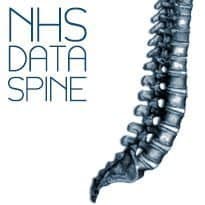Spine2 built in-house on open source
- 22 April 2013

The replacement for the NHS data spine, Spine2, is being built using open source components and is due to go live at the end of October.
A recent briefing for Intellect members said a former NHS Connecting for Health team, now working within the Health and Social Care Information Centre, is developing Spine2.
The core of the project is the redevelopment of Spine messaging and services, data migration from the Spine to Spine2, and the procurement of new hardware and hosting facilities.
A production-ready ‘core’ will be ready by the end of July, while go-live is planned for the end of October when the existing Spine will be switched off.
Intellect head of healthcare Jon Lindberg said “most suppliers” have been “quite supportive of the approach [that has been] taken” because there had been “an iterative approach to writing and testing”.
But, he said: “They [suppliers] don’t know what it looks like in practice – that will happen over the summer when suppliers get to integrate with the spine to start testing if it works.”
In a recent report on evolving a new digital architecture for the NHS, Intellect highlighted perceived problems with the NHS’ existing infrastructure.
These included the difficulty of accessing the Spine and its services, such as the Personal Demographics Service.
The report argued that this needed to change, so that new, more integrated systems could be built that learned from the best of e-commerce, such as lastminute.com for booking or Amazon for ordering and tracking.
The briefing suggested that the team behind Spine 2 has listened to at least some of these complaints.
It said the new approach will involve smaller contracts – all below £100m and placed through the G-Cloud and other government procurement frameworks – plus “active market engagement to build and maintain supplier interest.”
It will also involve some open source components – such as the Python programming language and Riak database – to avoid mainstream proprietary solutions.
The new approach will deliver a simpler Spine, with a self-service portal to help suppliers find out what has happened to messages, and a shorter and simpler accreditation process to integrate with it.
Lindberg reiterated that this was a key demand from suppliers. At the moment, innovative solutions were either being developed without being connected to the Spine or were being connected using an integration company, he said.
“They [CfH] are reviewing the whole assurance process, and that is something industry has a keen interest in contributing to,” he added.
Informal integration testing is already being carried out with “selected high volume suppliers.” Supplier formal integration testing is due to be available by 13 May. National Integration Centre assurance testing will run in parallel to this.
A team from the HSCIC is also running an identity and access management project, looking at a better way of identifying NHS users and giving them access to functionality.
Two suppliers have been short-listed for this project, with go-live set for December 2014.




